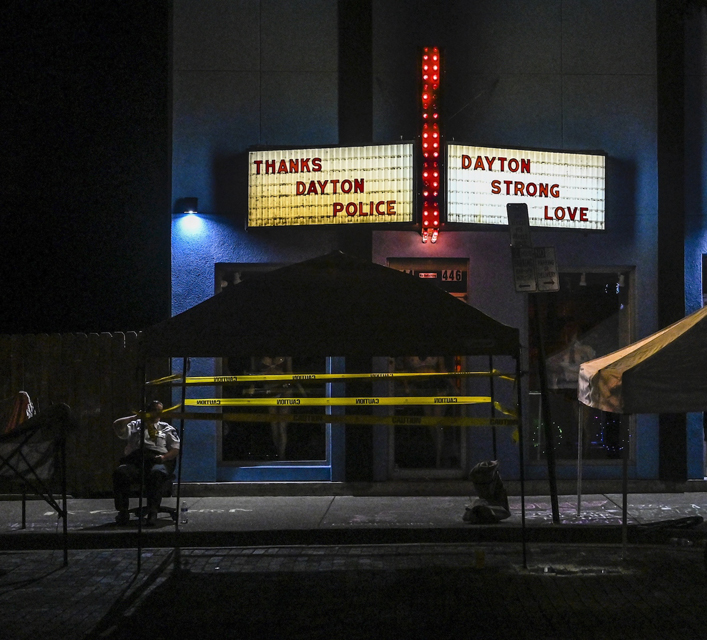The real crisis

By Richard Bromberg
My wife, Diann, and I ask a lot of questions about the Oregon District massacre. We are impacted in a different way than many. We are red flaggers.
Red flaggers are forensic specialists who are risk assessors, attempting to identify people with significant violence or suicide potential. This is what we do day in and day out. We look at a lot of information about a person, from different sources as well as the person themselves. We ask them a lot of questions, up to 1,000 questions in a period of several hours. We observe them as they attempt to answer our questions. Seventy-five percent of the time they lie to us; we usually know when they’re doing this because this is how we’ve been trained.
We still get fooled, because some sources aren’t complete or accurate, and some people are mighty good at lying.
Mental health professionals are traditionally the most naïve of people: they believe mostly anything. Unless they’re sufficiently trained, and most aren’t, they shouldn’t assess risk in potentially dangerous people.
We are very alone in what we do — identifying dangerous people and then going to court to confront them. Most mental health folks don’t want to do what we do. It’s a tremendous responsibility and it comes with risks. But we have a mission to save some people, especially children, and we feel it’s worth it.
What we do comes after years of being on the front lines of many mental health emergencies, years of working with numerous law enforcement folks and courts throughout Ohio and Pennsylvania, years of directing and being involved in psychiatry units and coordinating behavioral medicine at Kettering Medical Center, decades of treating unhealthy family units, all the time being pretty close to the emotional ground in the communities south of Dayton.
So we see a lot. And hear a lot. And we hear the talking points after senseless shootings. What we know is that political pundits’ talking points have little to do with why these things happen; nor do they help much in predicting who might act out next.
We first saw signs of problems in 1970s night rides with the police when called to parent-absent homes in Centerville, Kettering, and Bellbrook with trouble brewing.
Family structures were clearly breaking down in the 1980s with increasing domestic violence, divorce, and the emergence of single-parent families.
Religious organizations were losing members, and more and more angry children were showing up at schools. In the 90s, insurance changed, and people and families had fewer opportunities for treatment. Family therapy, popular in the 1970s, was de-emphasized. The focus became individuals, not families; medication, not talking. Society’s values changed in the ‘90s and became more ambiguous. Depression and suicide were increasing significantly, and parents felt helpless.
And then came the internet, and not long after, social media, which put a sword through every marriage and family. People stopped talking with each other.
Today, talk and images of violence are a regular part of our everyday experience. Suicide and the incidence of mass shootings are at record high levels; they’ve been increasing significantly for 10 years. We don’t stop killing ourselves or others; we don’t stop doing the things that got us here. We’re more political, but we’ve learned little about solving our problems.
What is the real diagnosis? James Howard Kunstler, one of our wisest cultural observers, sums it up this way: “This is exactly what you get in a culture where anything goes and nothing matters. Extract all the meaning and purpose from being here on earth and erase as many boundaries as you can from custom and behavior, and watch what happens, especially among young men.”
Kunstler’s right. Young men have a problem. NIMH statistics estimate that as many as 50 percent of our boys live in what Kunstler describes as “an abyss of missing social relationships,” of no communities, no fathers, no mentors, no initiations into personal responsibility, no daily organizing principles, no instruction in useful trades, no productive activities, no opportunities for love and affection, and no way out.
Our leaders are too cowardly to say so, but the signs are everywhere. Mass shootings are just the final manifestation of the problem. Millions are dependent on drugs, legal and illegal. Fifteen percent of all millennials still live at home with their parents. Fifty years ago, more than 80 percent of American adults this age were already married, living with a spouse. Today, fewer than half the adults between 25 and 34 are married. The Washington Post (3/21/19) reports that 51 percent of American young people are not in any kind of romantic relationship at all.
So it’s not surprising that millions of them feel helpless, miserable, and alone — they are. They lack friends or parents or religious organizations to give purpose and moral coherence to their lives. They live in a suffocating culture that they feel no control over. Local or personal identity and local institutions are the weakest that they’ve ever been in this country, in our community. Increasingly, young people on social media think our democracy is fake, because in some instances it is.
The policies people live under, the jobs they hold, even their personal opinions, are controlled by the Big Tech monopolies, the media rants, the Washington bureaucrats —people far away.
America is supposed to be a free country, but millions of young people look around and they feel like they’re trapped in a stagnant, frightening, uncomfortable, and unpredictable place. In an environment like this, a few people will lash out in violence; millions of others will simply fade away: in suicides, drug overdoses, unhealthy escape.
The real crisis, the one that’s threatening us and our neighbors, is that. It’s a long-term crisis. It’s been unfolding for decades. Our political pundits and mainstream media are happy to pretend it’s not happening at all, but it is happening, and we cannot ignore it forever.
Dr. Richard Bromberg is a forensic/community psychologist in the Miami Valley since 1970.
To read the complete September 2019 Dayton Jewish Observer, click here.



